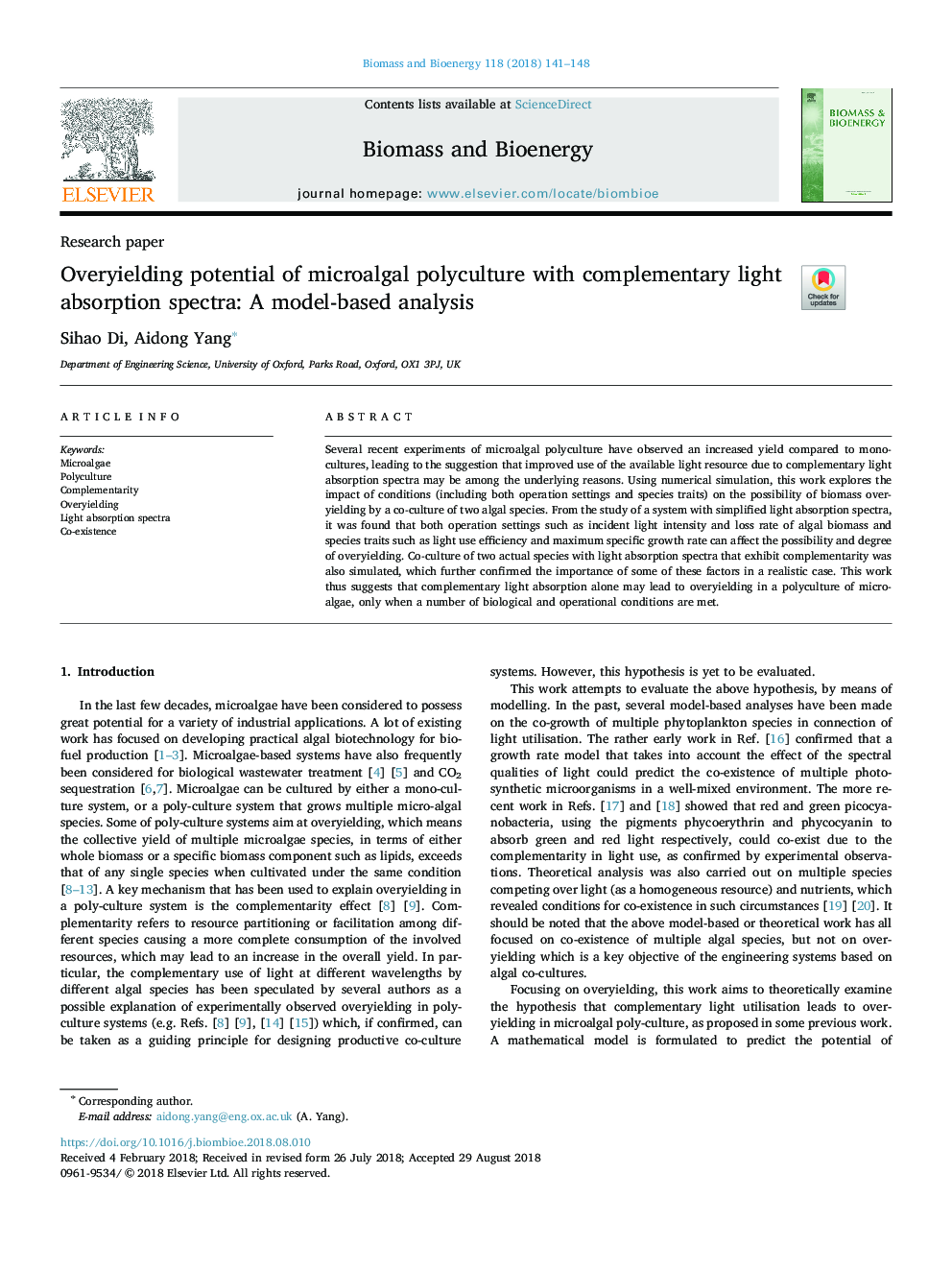| Article ID | Journal | Published Year | Pages | File Type |
|---|---|---|---|---|
| 9952676 | Biomass and Bioenergy | 2018 | 8 Pages |
Abstract
Several recent experiments of microalgal polyculture have observed an increased yield compared to monocultures, leading to the suggestion that improved use of the available light resource due to complementary light absorption spectra may be among the underlying reasons. Using numerical simulation, this work explores the impact of conditions (including both operation settings and species traits) on the possibility of biomass overyielding by a co-culture of two algal species. From the study of a system with simplified light absorption spectra, it was found that both operation settings such as incident light intensity and loss rate of algal biomass and species traits such as light use efficiency and maximum specific growth rate can affect the possibility and degree of overyielding. Co-culture of two actual species with light absorption spectra that exhibit complementarity was also simulated, which further confirmed the importance of some of these factors in a realistic case. This work thus suggests that complementary light absorption alone may lead to overyielding in a polyculture of microalgae, only when a number of biological and operational conditions are met.
Related Topics
Physical Sciences and Engineering
Chemical Engineering
Process Chemistry and Technology
Authors
Sihao Di, Aidong Yang,
